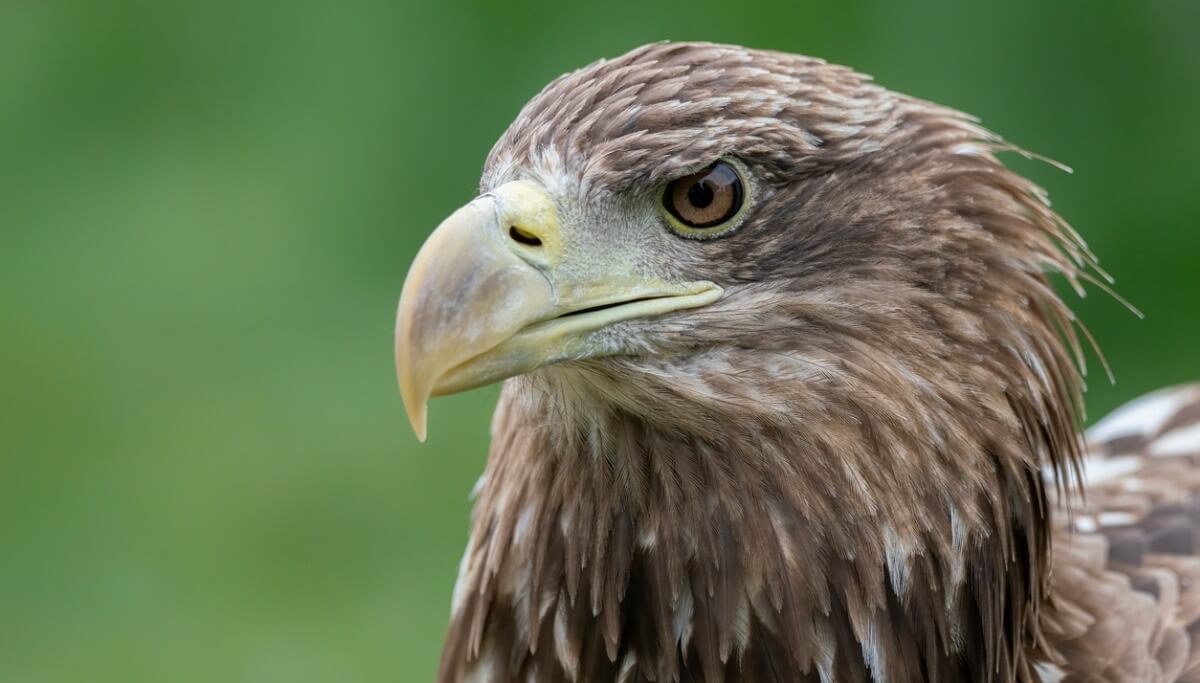White-Tailed Eagle: Habitat and Characteristics

Eagles are huge raptors that are found throughout the world, and are usually associated with aquatic environments. Although not as famous as its American counterpart – the bald eagle – the white-tailed eagle is an impressive old-world species.
This species is found in much of Asia and Europe, although its previous distribution was much greater. Various problems of human origin eliminated it from many areas and reduced its populations. Luckily, the nuclei seem to be on the mend these days.
If you want to learn more about this magnificent bird —which is as large as any European raptor— we invite you to continue reading.
Habitat of the white-tailed eagle
The white-tailed eagle, with the scientific name Haliaeetus albicilla, is a bird of prey that is distributed throughout a considerable part of Asia. Despite this, its most impressive populations appear in eastern Europe. Most of this species can be found in Norway and Russia.
In these areas, the eagle is closely tied to large bodies of water. It appears mainly around lakes, marshes, mighty rivers, and ocean shores, all of them within temperate, boreal, or tundra zones. In addition, it nests in cliffs or large trees.
The populations of this raptor are sedentary residents of the countries of Eastern Europe. The rest of the populations are mostly migratory. They spend the breeding season in one area and the winter in a different one, in search of more appropriate environmental conditions.
Some young eagles travel longer distances in winter and end up reaching countries in central and southern Europe, such as France or Spain. It should be noted that, although the species is spreading little by little and recovering its old distribution, the improvement is slow.

Physical characteristics
Haliaeetus albicilla stands out for its immense size and robust appearance. Its body length varies between 70 and 90 centimeters (28 – 35 inches) and its wingspan reaches an incredible 2 to 2.4 meters (6.5 – 7.8 feet). Weighing between 4 and 7 kilos (8 – 15 lbs), the females are somewhat larger than the males, who only reach 3.5 or 5 kilos (7 – 10 kilos).
This magnitude, together with its distribution and preference for water, allows the raptor to be easily identified. However, there are other very representative characteristics that can help in this task. We’ll show you some of them.
The European eagle has enormous long, wide wings, quite rectangular in shape and finishing in elongated finger-shaped feathers. The tail is wide, quite short, and wedge-shaped. The head is large and carries a huge, broad, thick yellow bill. The neck is long and the legs strong, ending in huge black claws.
The plumage of the adults is brown and quite uniform, with a lighter head and a totally white tail. Juveniles are darker brown, but have light spots. The tail feathers are white with thick brown margins, which they lose as they mature.
Feeding of the white-tailed eagle
This bird has a versatile and opportunistic diet. It can hunt or fish for fresh prey, but it’s also capable of consuming carrion or stealing prey from other animals, taking advantage of its enormous size. Among them are otters and ospreys.
Their relationship with bodies of water isn’t by chance, since a large part of the eagle’s diet is made up of fish. Other common victims are waterfowl. Although to a lesser extent, it also feeds on mammals.
State of conservation
As already mentioned, these eagles have suffered historical declines due to human persecution. Centuries ago they were more common, they used to spread over wide regions of the Mediterranean and even reached Spain.
Fishermen, ranchers, or game reserve guards systematically killed these animals, under the unfounded belief that they would negatively affect their resources. They also killed these birds of prey to collect their eggs or for other purposes.
These practices, which are rarer today but still claim lives, managed to extinguish eagles from much of their range.
After that, the destruction of their habitats and the proliferation of pesticides, heavy metals, and other bioaccumulative toxic substances have posed severe threats to the species. Habitat destruction is a growing danger today.
Fortunately, the huge range and previous abundance have allowed eagles to survive to this day. After major conservation efforts, their populations are increasing again, slowly but surely.
Eagles have made their way into parts of the UK and are slowly beginning to spread over the areas they used to inhabit. Thanks to all this, they’re considered to be of least concern by the IUCN.

This splendid raptor has been able to survive over time, despite the constant mistreatment by humans over the years. In an ideal world, future generations will once again be able to enjoy watching these birds soar through the skies or fish in the nearby seas.
All cited sources were thoroughly reviewed by our team to ensure their quality, reliability, currency, and validity. The bibliography of this article was considered reliable and of academic or scientific accuracy.
- BirdLife International. 2020. Haliaeetus albicilla. The IUCN Red List of Threatened Species 2020: e.T22695137A181768148.
- https://www.rspb.org.uk/birds-and-wildlife/wildlife-guides/bird-a-z/white-tailed-eagle/
- https://seo.org/ave/pigargo-europeo/
